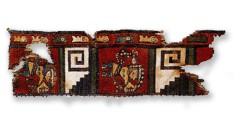Consensual relations? Academic involvement in the illegal trade in ancient manuscripts
Brodie, N. (2009) ‘Consensual relations? Academic involvement in the illegal trade in ancient manuscripts’, in Green, P. and Mackenzie, S. (eds.) Criminology and Archaeology: Studies in Looted Antiquities (Oñati International Series in Law and Society). Oxford: Hart, pp. 41–58.
Over the past two decades, a large number of previously unseen ancient manuscripts and other inscribed objects have appeared on the international market. Although this material is often characterised as unprovenanced, the modern country of origin of a manuscript can usually be deduced from the physical nature of the document and the style, language, and content of its text. Thus it is known that most are from Iraq or Afghanistan, although some, most famously the Gospel of Judas, are from other countries (in the Gospel’s case, Egypt). They have usually been excavated and exported in contravention of national laws. The academic response to these manuscripts is divided. Some scholars view them as a legitimate resource for historical research. Others feel that their historical value is reduced and perhaps compromised by the loss of archaeological context entailed by the destructive manner of their excavation, and fear that the acquisition and publication of such manuscripts might encourage further destructive excavation of what is at the moment still safely buried material. This difference in opinion has been expressed through debate at academic meetings and in the literature, although to date the debate has focused largely on what effects the manuscripts trade might have on scholarship. Little or no attention has been paid to the criminal relations of the trade and their possible social consequences. This chapter considers the debate over the manuscripts trade in more detail, before offering an outline account of the criminal relations of the trade and considering what might be the appropriate scholarly response to criminally traded material. Finally, it is argued that the criminality of the trade is a subject excluded from academic archaeological discourse, and some thought is given to the negative implications of that exclusion for criminological research.
